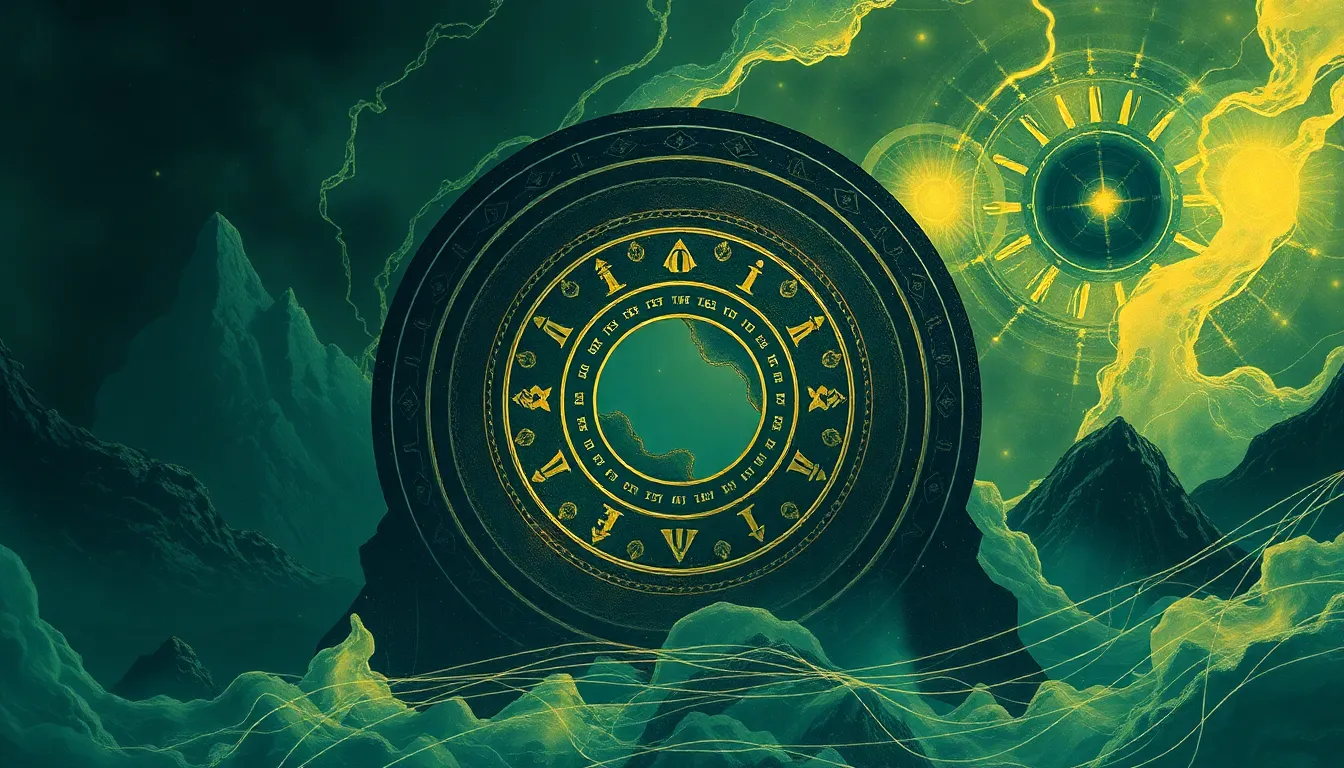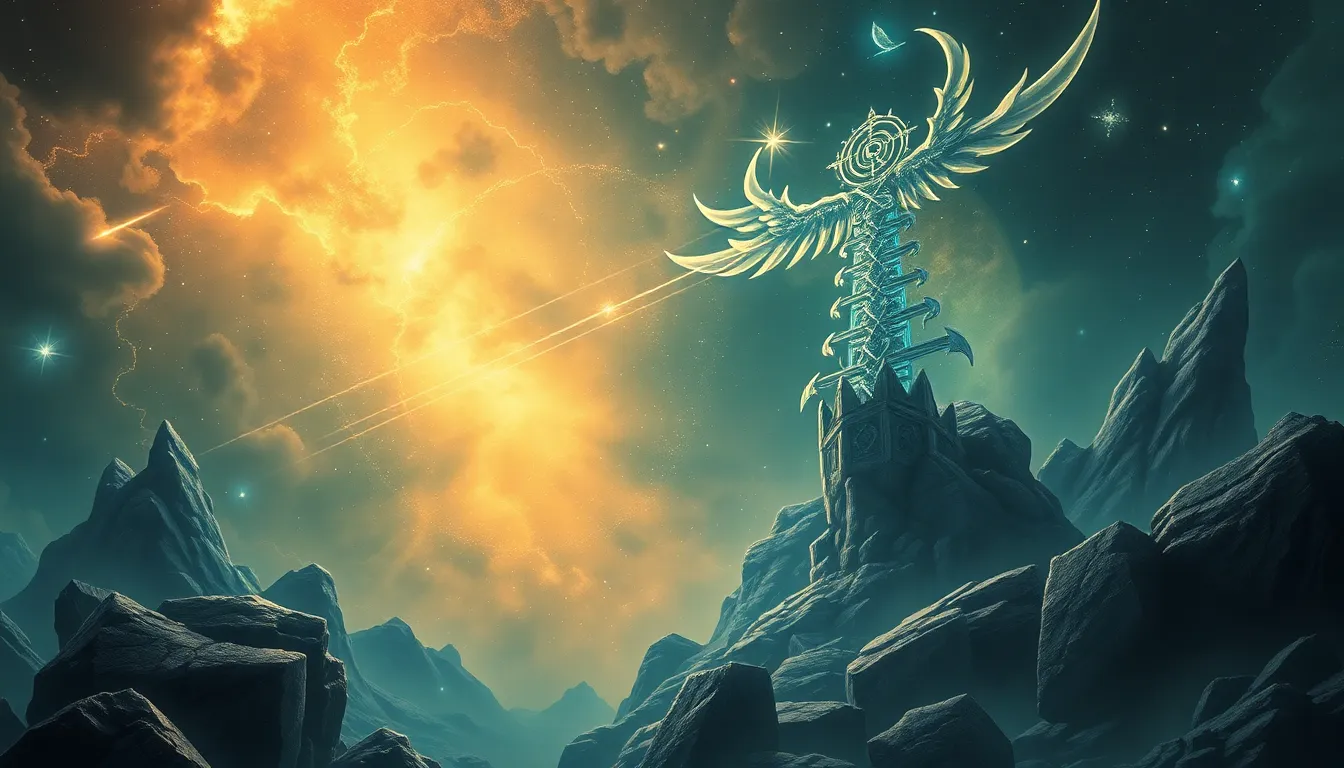The Quest for the Hidden Power: Myths of Strength
I. Introduction
Strength is a multifaceted concept that transcends mere physical power. It encompasses emotional resilience, mental fortitude, and spiritual endurance. In various contexts—from athletics to personal challenges—strength is often celebrated and revered. Myths, with their rich storytelling traditions, have played a significant role in shaping our understanding of strength throughout human history.
This article aims to explore the myths of strength across cultures, delving into how these narratives have influenced our perceptions and values regarding power, resilience, and heroism.
II. Historical Perspectives on Strength
A. Ancient Civilizations and Their Heroes
1. Greek Myths: Hercules and His Twelve Labors
In Greek mythology, Hercules stands as a paragon of strength and bravery. His twelve labors are not merely tests of physical prowess but also represent the struggle against seemingly insurmountable odds. Each labor challenges Hercules to confront his fears and limitations, highlighting the idea that true strength lies in perseverance and courage.
2. Norse Legends: Thor and His Hammer
Thor, the Norse god of thunder, embodies the archetype of the warrior hero. Armed with his magical hammer, Mjölnir, Thor defends Asgard from giants and other threats. His strength is not just physical; it symbolizes the protection of the realm and the fight against chaos, emphasizing the role of strength in leadership and guardianship.
B. The Role of Strength in Warfare and Leadership
1. Alexander the Great and His Conquests
Alexander the Great is often remembered not just for his military genius but also for his physical and psychological strength. His ability to lead men into battle and inspire loyalty is a testament to the power of strength in leadership. His campaigns reshaped the known world, illustrating how strength can forge empires.
2. Genghis Khan: The Strength of the Mongol Empire
Genghis Khan’s rise to power is a remarkable story of strength, both in military might and in strategic thinking. He united the Mongol tribes and led them to conquer vast territories, demonstrating that strength in leadership is as crucial as physical prowess on the battlefield.
III. Strength in Mythical Creatures
A. Beasts of Legend: Giants and Titans
1. The Cyclops: Symbolism of Raw Power
The Cyclops in Greek mythology symbolizes raw, unrefined power. With their brute strength and single eye, they represent a primal force that can be both destructive and creative, embodying the dual nature of strength itself.
2. Titans of Greek Mythology: Overcoming the Gods
The Titans, the predecessors of the Olympian gods, signify the struggle for power and dominance. Their stories often revolve around rebellion against the established order, showcasing the tension between strength and authority in mythological narratives.
B. Dragons and Their Representation of Strength
1. Cultural Variations: Eastern vs. Western Dragons
Dragons are powerful symbols of strength in many cultures, though their representations differ significantly. In Western mythology, dragons are often depicted as menacing creatures to be slain, while in Eastern traditions, they are seen as benevolent beings that bring good fortune and symbolize power and strength.
2. The Role of Dragons in Empowering Heroes
In many tales, dragons serve as formidable adversaries that heroes must overcome to prove their strength. The act of defeating a dragon often signifies the hero’s transformation and growth, reinforcing the idea that true strength comes from facing and overcoming great challenges.
IV. Inner Strength: Psychological and Spiritual Myths
A. The Concept of Resilience in Folklore
1. Tales of Overcoming Adversity
Many myths center around characters who face adversity and emerge stronger. These narratives underscore the importance of resilience, teaching that strength is not just about physical ability but also about mental and emotional endurance in the face of life’s challenges.
2. The Hero’s Journey: Psychological Transformation
The Hero’s Journey, a common narrative structure in myths, emphasizes personal growth through trials. The hero often faces significant obstacles that test their resolve, leading to a transformation that embodies inner strength and wisdom.
B. Spiritual Myths: Strength Through Faith
1. Tales from Various Religions: Miraculous Strength
Spiritual myths across religions often highlight the miraculous strength that faith can inspire. Stories of saints and prophets who perform extraordinary feats underscore the belief that spiritual conviction can lead to profound strength.
2. The Power of Belief: How Faith Inspires Strength
Faith can empower individuals to confront their fears and challenges. Many myths illustrate how belief in a higher power or purpose can provide the strength needed to overcome adversity, highlighting the interplay between spirituality and strength.
V. The Symbolism of Strength in Arts and Literature
A. Representations of Strength in Poetry and Prose
1. Epic Poems: The Iliad and Beowulf
Epic literature often explores the theme of strength through heroic figures. In “The Iliad,” Achilles embodies both physical strength and the emotional turmoil of a warrior. Similarly, in “Beowulf,” the titular character’s battles against Grendel and a dragon showcase the multifaceted nature of strength and heroism.
2. Modern Interpretations of Heroism
Contemporary literature continues to redefine heroism, focusing on characters who exhibit emotional and psychological strengths alongside physical capabilities. This evolution reflects a broader understanding of what it means to be strong in today’s society.
B. Visual Arts: Depictions of Strength in Sculpture and Painting
1. Michelangelo’s David: The Ideal of Physical Strength
Michelangelo’s “David” is a timeless representation of the ideal male form and the concept of physical strength. The statue captures the tense moment before battle, symbolizing not just physical power but also mental preparation and resolve.
2. Contemporary Art: Redefining Strength
Modern artists challenge traditional notions of strength, exploring themes of vulnerability, resilience, and emotional depth. This shift reflects a growing recognition of the importance of emotional strength in contemporary society.
VI. The Dichotomy of Strength: Physical vs. Emotional
A. Myths Surrounding Physical Strength
1. The Ideal Body: Cultural Standards of Strength
Cultural standards of strength often emphasize an idealized physical form, perpetuating myths about what it means to be strong. These ideals can be misleading, as they often overlook the diverse expressions of strength found in different bodies and abilities.
2. The Limits of Physical Power: Myths vs. Reality
While physical strength is often glorified, the reality is that it has its limits. Myths that depict invincible heroes can create unrealistic expectations, leading to a misunderstanding of the true nature of strength and resilience.
B. Emotional Strength and Vulnerability
1. Celebrating Emotional Resilience in Myths
Many myths celebrate emotional strength, portraying vulnerability as a source of power. Characters who confront their emotions and fears often emerge as the true heroes of their stories, demonstrating that emotional resilience is a vital aspect of strength.
In conclusion, the exploration of myths surrounding strength reveals a rich tapestry of narratives that inform our understanding of power, resilience, and heroism. By examining these myths across cultures and contexts, we can appreciate the diverse expressions of strength that exist both in our stories and in our lives.



